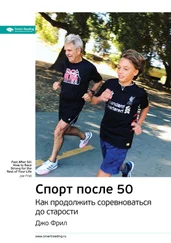Cunningham, D. A. et al. Cardiovascular Response to Intervals and Continuous Training in Women // European Journal of Applied Physiology 41 (1979): 187–197.
Daniels, J. Daniels’ Running Formula. 2nd edition. Champaign, Human Cinetics, 2005.
Daniels, J. Physiological Characteristics of Champion Male Athletes // Research Quarterly 45 (1989): 342–348.
Daniels, J. et al. Interval Training and Performance // Sports Medicine 1 (1984): 327–334.
David, A. S. et al. Post-Viral Fatigue Syndrome: Time for a New Approach // British Medical Journal 296 (1988): 696–699.
Davis, J. M. Carbohydrates, Branched-Chain Amino Acids, and Performance – the Central Fatigue Hypothesis // International Journal of Sport Nutrition 5 (1995): S29-S38.
Deuster, P. A. et al. Nutritional Survey of Highly Trained Women Runners // American Journal of Clinical Nutrition 45 (1986): 954–962.
De Vries, H. A. Effects of Various Warm-up Procedures on 100-Yard Times of Competitive Swimmers // Research Quarterly 30 (1959): 11–20.
DiCarlo, L. J. et al. Peak Heart Rates during Maximal Running and Swimming: Implications for Exercise Prescription // International Journal of Sports Medicine 12 (1991): 309–312.
Dill, D. et al. A Longitudinal Study of 16 Champion Runners // Journal of Sports Medicine 7 (1967): 4–32.
Dimsdale, J. et al. Postexercise Peril: Plasma Catecholamines and Exercise // Journal of the American Medical Association 251 (1984): 630–632.
Doherty, M. The Effects of Caffeine on the Maximal Accumulated Oxygen Deficit and Short-Term Running Performance // International Journal of Sports Nutrition 8, no. 2 (1998): 95–104.
Dragan, I., and Stonescu, I. Organism Recovery Following Training . Bucharest, Romania: Sport-Turism, 1978.
Drinkwater, B. L. Women and Exercise: Physiological Aspects // Exercise and Sports Sciences Reviews 12 (1984): 21–51.
Drinkwater, B. L. et al. Bone Mineral Content of Amenorrheic and Eumenorrheic Athletes // New England Journal of Medicine 311 (1984): 277–281.
Driver, H. S. et al. Prolonged Endurance Exercise and Sleep Disruption // Medicine and Science in Sports and Exercise 26, no. 7 (1994): 903–907.
Droghetti, P. et al. Noninvasive Determination of the Anaerobic Threshold in Canoeing, Cross-Country Skiing, Cycling, Roller and Ice Skating, Rowing and Walking // European Journal of Applied Physiology 53 (1985): 299–303.
Dufaux, B. et al. Serum Ferritin, Transferrin, Haptoglobin, and Iron in Middle– and Long-Distance Runners, Elite Rowers, and Professional Racing Cyclists // International Journal of Sports Medicine 2 (1981): 43–46.
Dunbar, C. C. et al. The Validity of Regulating Exercise Intensity by Ratings of Perceived Exertion // Medicine and Science in Sports and Exercise 24 (1992): 94–99.
Dutto, D. J., and Cappaert, J. M. Biomechanical and Physiological Differences between Males and Females during Freestyle Swimming // Medicine and Science in Sports and Exercise 26, no. 5 (1994): 1098.
Eaton, S. B. Humans, Lipids, and Evolution // Lipids 27, no. 1 (1992): 814–820.
Eaton, S. В., and Konner, M. Paleolithic Nutrition: A Consideration of Its Nature and Current Implications // The New England Journal of Medicine 312, no. 5 (1985): 283–289.
Eaton, S. B., and Nelson, D. A. Calcium in Evolutionary Perspective // American Journal of Clinical Nutrition 54 (1991): 281S–287S.
Eaton, S. B., Shostak, M., and Konner, M. The Paleolithic Prescription . New York: Harper & Row, 1989.
Ekblom, B. Effect of Physical Training in Adolescent Boys // Journal of Applied Physiology 27 (1969): 350–353.
Elliott, R. The Competitive Edge . Mountain View, CA: TAFNEWS Press, 1991.
Ericsson, K. A., Krampe, R. T., and Heizmann, S. Can We Create Gifted People? // CIBA Foundation Symposium 178 (1993): 221–231.
Evans, M. Endurance Athlete’s Edge . Champaign, IL: Human Kinetics, 1997.
Evans, M. Triathlete’s Edge . Champaign, IL: Human Kinetics, 2003.
Evans, W. et al. Protein Metabolism and Endurance Exercise // The Physician and Sports Medicine 11, no. 7 (1983): 63–72.
Farber, H. W. et al. The Endurance Triathlon: Metabolic Changes after Each Event and during Recovery // Medicine and Science in Sports and Exercise 23, no. 8 (1991): 959–965.
Faria, I. E. Applied Physiology of Cycling // Sports Medicine 1 (1984): 187–204.
Farrell, P. A. et al. Enkephalins, Catecholamines, and Psychological Mood Alterations: Effects of Prolonged Exercise // Medicine and Science in Sports and Exercise 19 (1987): 347.
Female Endurance Athletes / ed. B. L. Drinkwater. Champaign, IL: Human Kinetics, 1986.
Fitzgerald, L. Exercise and the Immune System // Immunology Today 9, no. 11 (1988): 337–339.
Francis, K. T. et al. The Relationship between Anaerobic Threshold and Heart Rate Linearity during Cycle Ergometry // European Journal of Applied Physiology 59 (1989): 273–277.
Freeman, W. Peak When It Counts . Mountain View, CA: TAFNEWS Press, 1991.
Freuncl, B. J. et al. Glycerol Hyperhydration: Hormonal, Renal, and Vascular Fluid Responses // Journal of Applied Physiology 79 (1995): 2069–2077.
Friel, J. The Cyclist’s Training Bible . 4-th edition. Boulder: VeloPress, 2009.
Fry, R. W. et al. Biological Responses to Overload Training in Endurance Sports // European Journal of Applied Physiology 64, no. 5 (1992): 335–344.
Fry, R. W. et al. Overtraining in Athletes: An Update // Sports Medicine 12, no. 1 (1991): 32–65.
Fry, R. W. et al. Periodization and the Prevention of Overtraining // Canadian Journal of Sports Science 17 (1992): 241–248.
Gibbons, E. S. The Significance of Anaerobic Threshold in Exercise Prescription // Journal of Sports Medicine 27 (1987): 357–361.
Gibbons, T. P. et al. Physiological Responses in Elite Junior Triathletes during Field Testing // Medicine and Science in Sports and Exercise 28, no. 5 (1996): SA756.
Gleeson, M. Biochemical and Immunological Markers of Overtraining // Journal of Sports Science and Medicine 1 (2002): 31–41.
Goedecke, J. H. et al. Effects of Medium-Chain Triaclyglycerol Ingested with Carbohydrate on Metabolism and Exercise Performance // International Journal of Sports Nutrition 9, no. 1 (1999): 35–47.
Goforth, H. W. et al. Simultaneous Enhancement of Aerobic and Anaerobic Capacity // Medicine and Science in Sports and Exercise 26, no. 5 (1994): 171.
Goldspink, D. F. The Influence of Immobilization and Stretch on Protein Turnover of Rat Skeletal Muscle // Journal of Physiology 264 (1977): 267–282.
Gonzalez, H., and Hull, M. L. Bivariate Optimization of Pedaling Rate and Crank-Arm Length in Cycling // Journal of Biomechanics 21, no. 10 (1988): 839–849.
Gonzalez, H., and Hull, M. L. Multivariable Optimization of Cycling Biomechanics // Journal of Biomechanics 22, no. 11–12 (1989): 1151–1161.
Graham, T. E., and Spriet, L. L. Caffeine and Exercise Performance // Sports Science Exchange 9, no. 1 (1996): 1–6.
Graham, T. E. et al. Metabolic and Exercise Endurance Effects of Coffee and Caffeine Ingestion // Journal of Applied Physiology 85, no. 3 (1998): 883–889.
Grandjean, A. C. Diets of Elite Athletes: Has the Discipline of Sports Nutrition Made an Impact? // Journal of Nutrition 127, no. 5 (1997): 874S-877S.
Green, D. R. et al. An Evaluation of Dietary Intakes of Triathletes: Are RDAs Being Met? // Brief Communications 89, no. 11 (1989): 1653–1654.
Читать дальше
Конец ознакомительного отрывка
Купить книгу

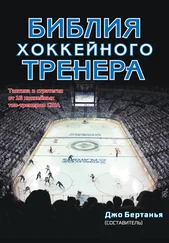
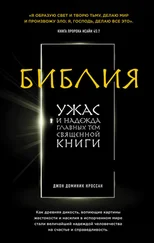
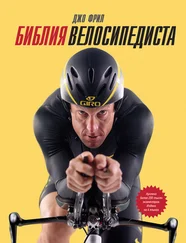





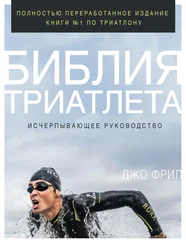
![Библия - Библия [Учебное издание]](/books/433190/bibliya-bibliya-uchebnoe-izdanie-thumb.webp)
